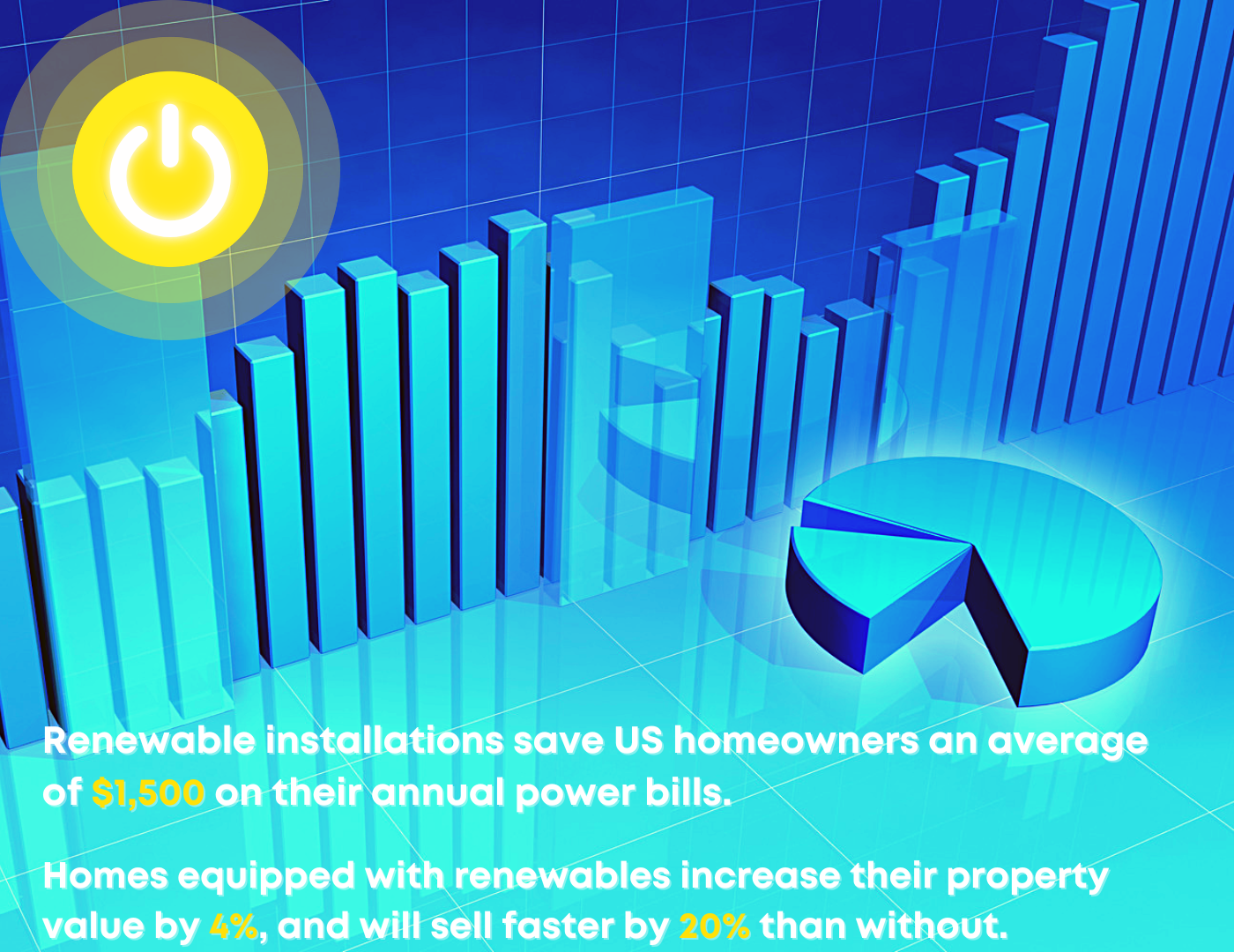WELCOME
At a time when the average American homeowner is becoming evermore burdened by the compounding financial pressures of rising utility rates, never-ending inflation, and the increasing costs of living, large swathes of people across the country have been transitioning to alternative forms of renewable energy to reduce their monthly expenses, decrease reliance on utility companies, and possess a high degree of personal independence that is widely thought to be unattainable.
Why Price Hikes Happen…
Local blackouts, construction projects, electrical maintenance operations, and geopolitical conflicts are largely responsible for those nasty rate hikes on our monthly power bills, and the primary reason millions of people are switching to renewables is due to the fact they’re largely subsidized by both federal and state government incentive programs, effectively making them cheaper and more affordable sources of energy that can’t be monopolized and charged at a premium by shady utility companies.
Who We Are & What We Do…
As a remote energy advisory, our team has spent the last five years helping residential homeowners transition to renewable energy on a home-by-home basis throughout multiple states in the US. We like to keep our operations focused around suburban and rural regions, and we meticulously conduct research within online message boards and private communications channels to locate the exact areas that are going to be affected by utility hikes from the designated energy provider. Once we receive permission from a locality’s town hall/city hall to start surveying their jurisdictions, our advisors establish the addresses that are most at-risk of experiencing high electrical rates, the residents of those respective areas are informed over the phone with a detailed summary, where they’re given suggestions for cheaper, alternative sources of power.
How The Process Works…
After a renewable upgrade has been selected, a site inspection will take place to determine if the homeowner’s property is compatible for the transition to move forward, and upon approval, a team of licensed electricians will arrive a time of convenience to install the energy system. Once it gets activated, the residents of that property will start saving money on day one. The transition process is identical to switching from AT&T to Verizon, only instead of swapping out one cell phone provider for another, you’re simply replacing your current expensive utility provider for a cheaper renewable source of electricity in the form of a home power upgrade that you get to own without having to worry about falling victim to never-ending price hikes every single year.
The Big Picture…
If you’re a homeowner who has well-kept internal and external infrastructure, you may possibly meet the requirements for alternative power components to be installed onto your property, with no out of pocket costs or hidden fees associated with the transition. Truth be told, not everyone is eligible for renewable installations, but in the event your household is found to be compatible after thorough circuitry inspection, the electrical upgrade can be completed in as little as two business days after the order has been fully licensed and processed.
How You Benefit…
Energy independence is the ultimate pathway to the type of financial certainty that would otherwise not be feasible while being at the mercy of multi-billion dollar businesses, who’s sole interest is adding more capital to their profit margins at the expense of their own customers. Making the switch to renewables is game-changing opportunity that removes parasitic greed from the equation, and allows homeowners to reap the rewards of having control over their own power production at a more affordable rate.

Value Proposition















FACTORS THAT INFLUENCE ELECTRCITY PRICES
There are several important elements that influence the cost of electricity:
1) Fuel Prices: The cost of fuel, which includes natural gas and petroleum, can potentially rise during times where the demand for electricity is abnormally high (e.g., summer and winter seasons), and in the event that turbulent weather conditions result in fuel supply chain shortages and/or subsequent damage to incurred upon transportation vehicles -- These compounding effects often create the scenario of higher fuel prices, which also increases the expense of generating electricity.
2) Distribution Process: The power distribution apparatus involved with connecting power plants to residents for electrical transfers contain several costs in order to maintain its optimal functionality, some of which includes repair costs in the event of a storm, or to improve cybersecurity capabilities.
3) Extreme Weather: Abnormally high or low temperatures are often responsible for spikes in demand for domestic heating and cooling, which can, in turn, cause increases in electricity demand and thus increase the costs of fuel and electricity.
4) Regulation Policies: In some regions of the country, state utility commissions regulate prices entirely, and several other states have a variety of differing regulated and unregulated prices for generators of power and for power distribution.
5) Power Plant Expenses: Every single building responsible for generating electricity for residents has to invest a portion of their profits towards the development, routine maintenance, and operating expenditures associated with that infrastructure.

HOW MUCH THE PRICE OF ELECTRICITY INCREASES EACH YEAR
According to the U.S. Energy Information Administration (EIA) electricity prices have increased 2.67% every year in the United States for the last 25 years, from a national average price of 8.26 cents per kilowatt-hour in 1998 to 15.98 cents per kilowatt-hour in 2023. Aside from the national average, the rate of increase in electricity prices in each state is also important. Every state has a specific mix of fuel soUrces and industrial policies that effect the rate of growth, and some states have seen their power rates increase much faster than the existing average.
- In the US, electricity prices have increased by 2.67% per year for the last 25 years, and most homeowners can expect their power bills to increase by approximately that amount every year.
- The average rate of electricity in 2023 was 15.98 cents per kilowatt-hour, but prices can range from as high as 42.36 cents per kWh in Hawaii to as low as 10.97 cents per kWh in North Dakota.
- The rate of increase in electricity prices has been higher in recent years because of increases in fossil fuel prices and the cost of power grid upgrades, and it may remain high because of climate change, but there's no way to know for sure.
- Making the switch to renewable energy may be the best way to reduce uncertainty about future electricity prices because estimates of long-term clean energy production is much more predictable. - During the past 25 years, the five states with the largest electricity prices increases were Hawaii, Massachusetts, California, Rhode Island, and Connecticut, with rates of growth between 3.73% and 4.58%.
- The bottom five were New Jersey, Iowa, New Mexico, Illinois, and Arizona, with annual rate increases between 1.79% and 1.93%.
